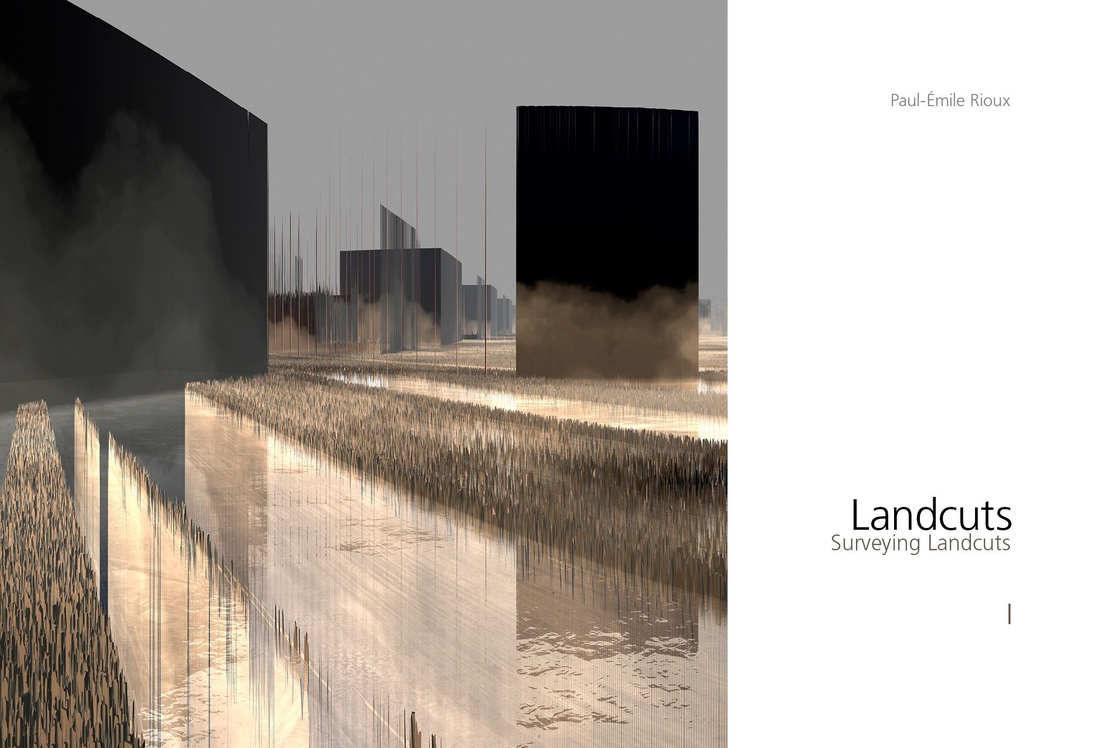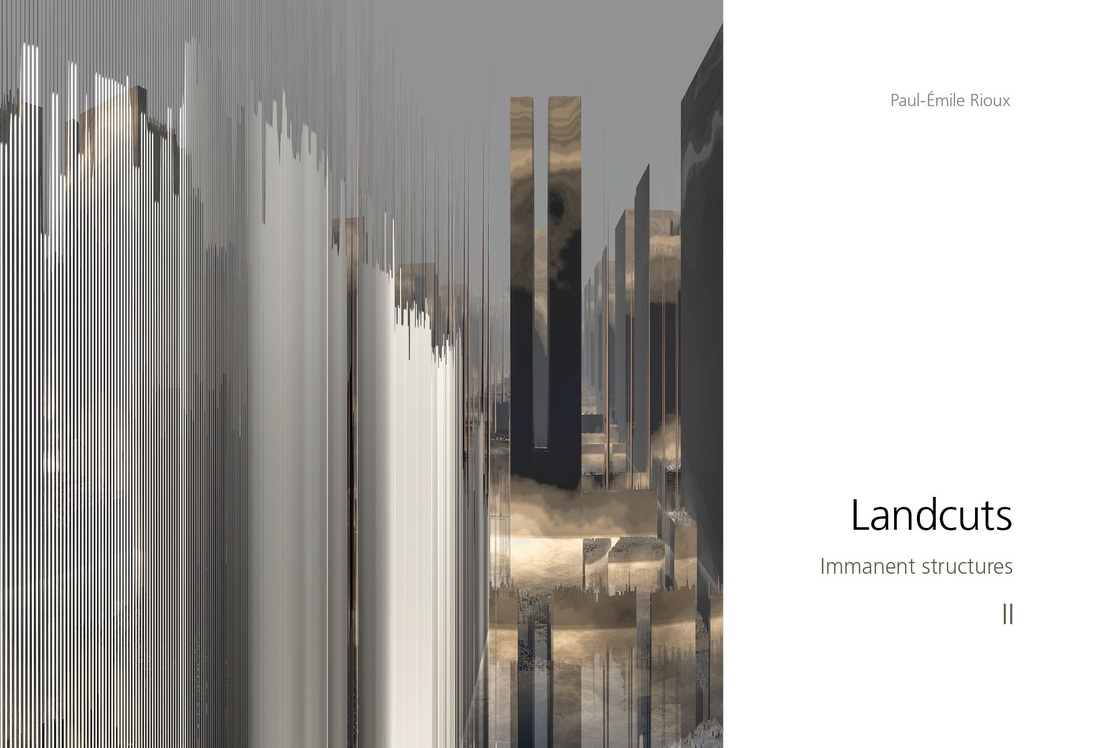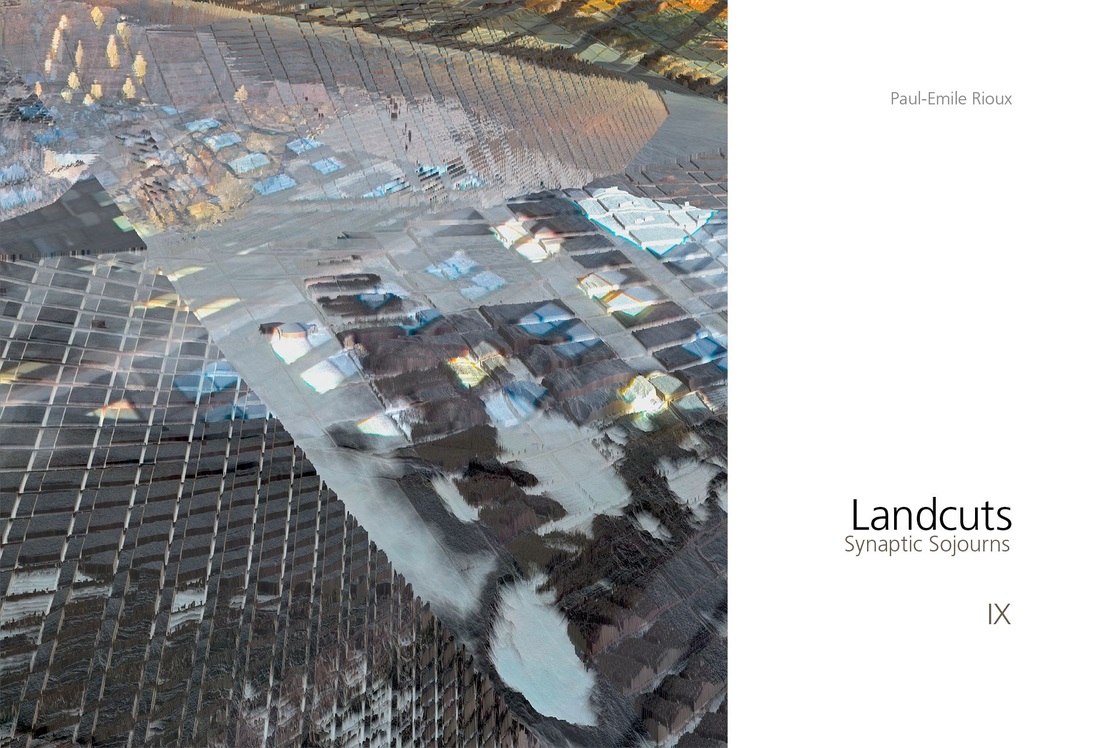Text: James D Campbell, 2014
|
Rioux’s palimpsest-cities are obviously modular, mutable and distributable. The interplay of integers in these Landcuts calls to mind Mark E. Taylor’s seminal notion of “combinatorial play.” Taylor suggests that networks adhere to organizational schemata radically distinct from the rationalized grids and hierarchies that enjoyed virtual hegemony from the Enlightenment through Modernism. [14] He says: “The network is both substantive and emerging, a structure and a paradigm. Networking displaces the grid. Topology is destiny.” [15] This is strikingly true of Rioux’s work in which self-replicating and endlessly interconnected, layered urban systems, mimesis and geometry are unifying tropes.
|
|
Rioux’s work in which self-replicating and endlessly interconnected, layered urban systems, mimesis and geometry are unifying tropes.
|
|
Each Landcut is like a set of informational currents that circulate “through us” and that “bind self and [digitally-generated] world in increasingly complex relations.”
|
|
Attending to the increasingly interlocking nature of our telematic networks, Taylor argues that the interactive conception lends primacy to an interaction that obviates the subject and object dichotomy, effectively making it “impossible to be sure where the human ends and the machine begins.” [16] There is a sense in which Rioux’s iconic monoliths are anthropomorphic and comprise a matrix that stakes a lasting claim upon us, self and other. Taylor insists that informational networks are themselves “neither subjective nor objective” but rather constitute “the matrix in which all subjects and objects are formed, deformed, and reformed.” [17] He argues that it is no longer easy to distinguish the line between mind and matter, self and other, human and machine, that mind is distributed throughout the world. [18] Each Landcut is like a set of informational currents that circulate “through us” and that “bind self and [digitally-generated] world in increasingly complex relations.” [19] If Taylor is right, and “the networks extruding from and into our bodies and minds form something like a technological unconscious, which, like conscious mental processes, screens information”, well, this has implications for the processing of these images, as well.
|
|
...the artist is thinking in strikingly contemporary and advanced ways about his project; namely, in a polycentric mode
|
|
To understand these Landcuts as charged networks of interchangeable semiotic intelligences is to suggest that, beneath their seductively interwoven and staggered facades (and the wealth of formal invention that they demonstrate, such as fractal triangles that spontaneously regroup and multiply), the artist is thinking in strikingly contemporary and advanced ways about his project; namely, in a polycentric mode. Understood as acute models of combinatorial play, Rioux’s imaginary cities are the furthest things from hermetically closed representations or abstracts. Their contents build momentum as we try and codify iconographies forever in flux and replete with a host of analogical and relational possibilities that slow our optic down and draw it out over and through repeated viewings before any conclusions can be drawn as to what constitutes the nature of the image as a Landcut.
Rioux’s images are exemplars of sophisticated combinatorial play and employ sundry devices from 3D models of topography and other sources found on the vast archive of the Internet. Indeed, the “cut” in “landcut” is a piece of land that the artist frames, constructs, and grows by blending other cuts taken from landscape photography, product shots, those 3D models of topography, all reinterpreted through digital techniques and upon which he has superimposed his own overwhelmingly supple surfaces. Here is an urgent geomania of the inner city understood as a legion of signifiers, not as a singularity. Through working exhaustively with those cuts, Rioux is able to mix and match the fictive and actual, order and randomness, icon and anthropomorph, in order to take the viewer to places, both inward (spiritual) and outward (alien), that ostensibly and simultaneously co-exist in both real and virtual worlds. Notes: 14-20. Mark C. Taylor, The Moment of Complexity: Emerging Network Culture (Chicago: University of Chicago Press, 2001), 225. |












